Shrubs are often described as the backbone of a garden, and can offer not only beautiful flowers but height and structure, foliage and berries.
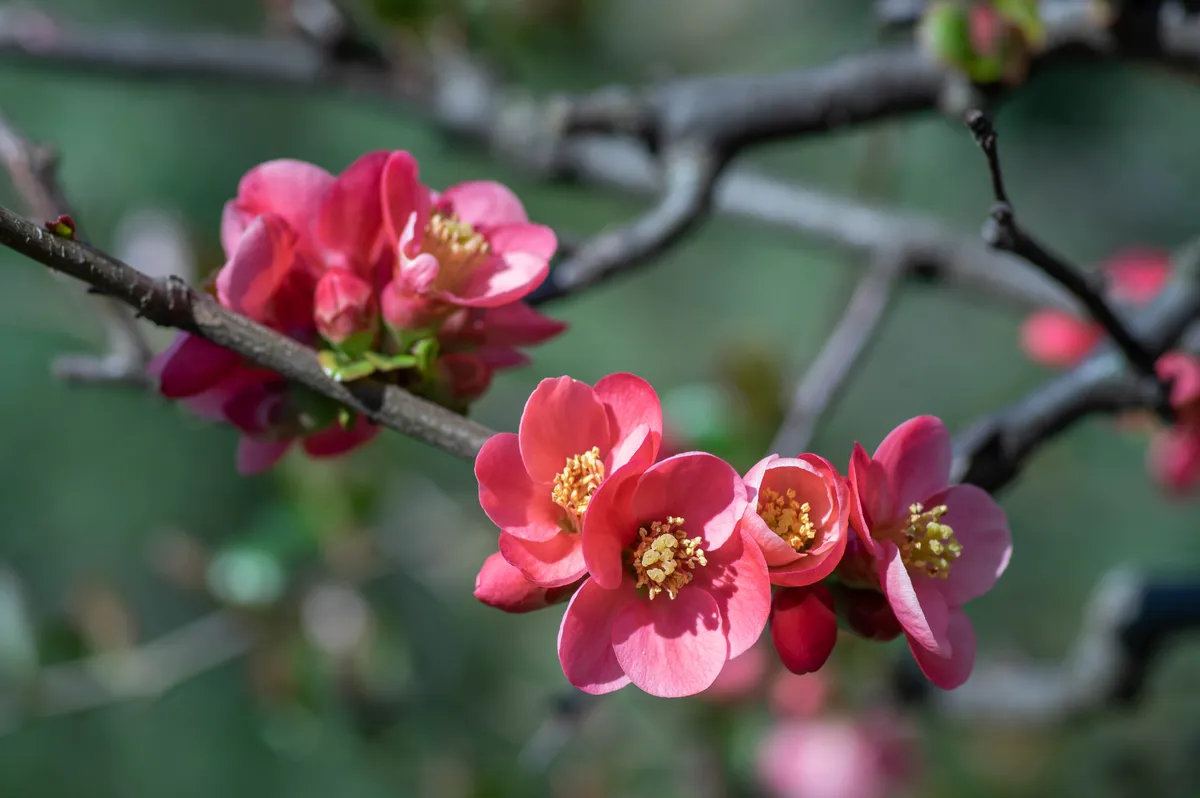
Flowering shrubs are often excellent for attracting bees, butterflies and other pollinators, and many have the added bonus of deliciously scented flowers. They can also provide much needed shelter, food and habitat for wildlife – birds are more likely to visit bird feeders if they have protective shrubs to dart in and out of.
Read about the best shrubs for birds
Some flowering shrubs have evergreen foliage and look good all year round; others are deciduous, and may offer beautiful foliage in autumn before it falls. Deciduous shrubs can be underplanted with spring bulbs such as crocus or spring flowers such as primulas, which flower before shrubs come into leaf.
You can grow flowering shrubs as focal points in a front garden or lawn or grow them in a mixed border of shrubs, perennials and annuals.
There are flowering shrubs to suit every garden. Choose carefully and you can enjoy shrubs in flower in every season of the year.
Are there any shrubs that flower all year?
There are no shrubs that flower continuously all year round. However, some shrubs do flower for a very long time, straddling two seasons, such as abelia, which starts flowering in summer and continues well into autumn. With a little planning you can plant flowering shrubs to add interest in your garden for 12 months of the year.
Jump to:
- The best spring-flowering shrubs
- The best summer-flowering shrubs
- The best autumn-flowering shrubs
- The best winter-flowering shrubs
Best flowering shrubs for spring
Camellia

Camellias bear rose-like blooms in early spring, in a range of colours including white, pale pink and red, and have glossy, evergreen foliage. They are woodland plants, so prefer light shade and acid soil – if you don't have acid soil in your garden, grow in a pot in ericaceous (lime-free) compost. Read about the best camellias to grow.
Flowers: February/March/April, depending on type
Evergreen/deciduous:
Evergreen
Height x spread:
1-4m x 1-4m
Best for: Acid soil, shade, containers
Scent? No
Japanese quince (Chaenomeles japonica)

Japanese quince (Chaenomeles japonica) is a beautiful wall shrub with attractive orange, crimson, white or peach flowers from March to May. It may produce small green or yellow quinces later in the season, which can be made into jelly. It is not fussy about soil, or aspect.
Flowers: March/April
Evergreen/deciduous: Deciduous
Height x spread: 1m x 2m
Best for: wall training, back of a border
Scent? No
Flowering currant (Ribes sanguineum)

Flowering currant (Ribes sanguineum) used to be a ubiquitous species in our gardens, introduced to the UK from the US in 1817. There are many welcome early spring-flowering cultivars that bear hanging clusters of flowers, in shades of red, pink, crimson or white. They provide lots of early nectar for bees (in the US they are an important source of nectar for hummingbirds). It can be grown as an informal hedge. Grow in a sunny spot, in moist soil.
Flowers: March/April
Evergreen/deciduous: Deciduous
Height x spread: 1.5m x 1.5m
Best for: mixed border, wildlife value, informal hedge
Scent? Aromatic, currant-scented leaves
California lilac (Ceanothus)
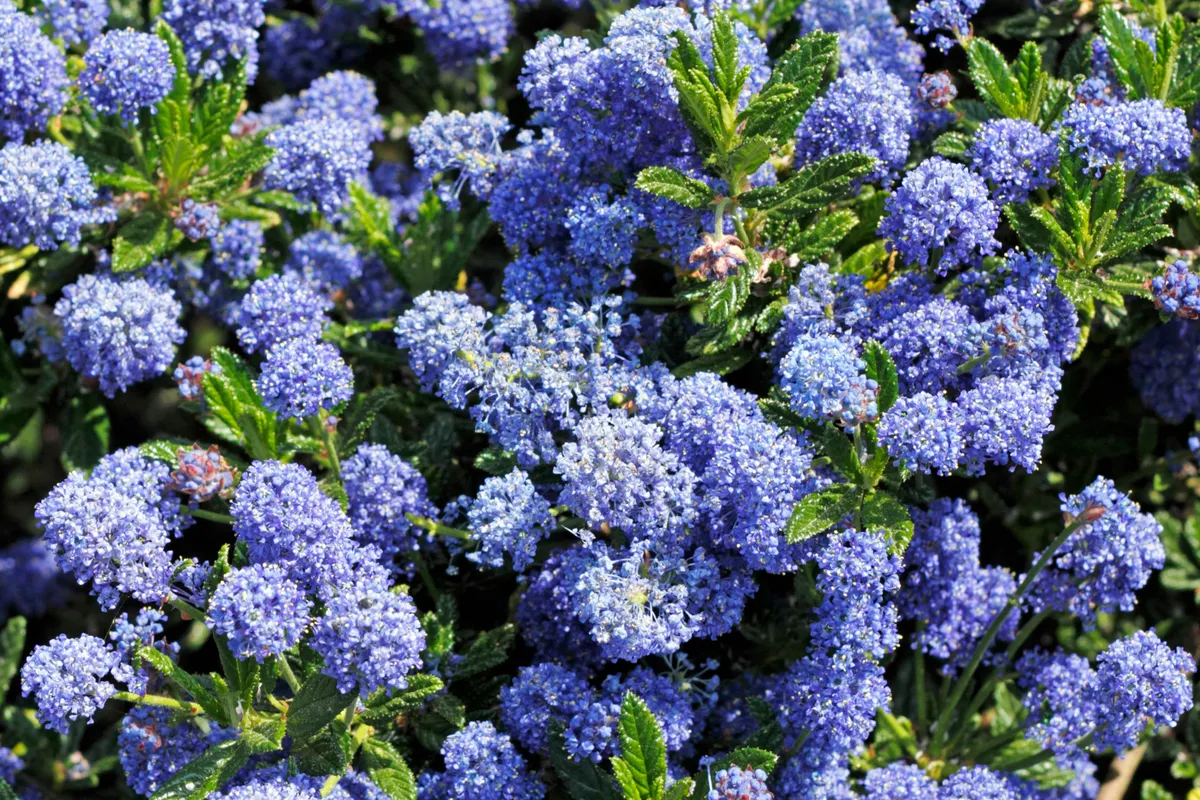
There are both evergreen and deciduous types of Ceanothus. They are grown for their usually vivid blue, but sometimes white or pink, flowers. They can form large shrubs or small trees, and some can also be trained against a wall, or grown as an informal hedge. Grow in a sheltered, sunny spot.
Flowers: April/May
Evergreen/deciduous: Evergreen or deciduous, depending on variety
Height x spread:
From 1m x 1m, depending on variety
Best for: wall training, informal hedge, mixed border
Scent? Yes
Pieris

Pieris are small, evergreen shrubs. In late winter and early spring, the fresh new leaves and shoots have beautiful and eye-catching pink or red tips. In mid spring, they bear small white or pink bell-like blooms. They need acid soil and grow well in pots – use ericaceous compost. Grow in sun or part shade.
Flowers: April/May
Evergreen/deciduous: Evergreen
Height x spread:
1m x 1.5m
Best for: attractive foliage in spring
Scent? No
Rhododendron

Rhododendrons bear masses of flowers in bright tones of red, pink, purple, yellow, white or purple. They like acid soil and some shade, so work well in woodland schemes. Compact and dwarf cultivars like Rhododendron ‘Princess Anne’ are best for small gardens.
Flowers: April/May
Evergreen/deciduous:
Evergreen
Height x spread:
from 1m x 1m, depending on type
Best for: bright flowers, acid soil
Scent? No
Lilac (Syringa)
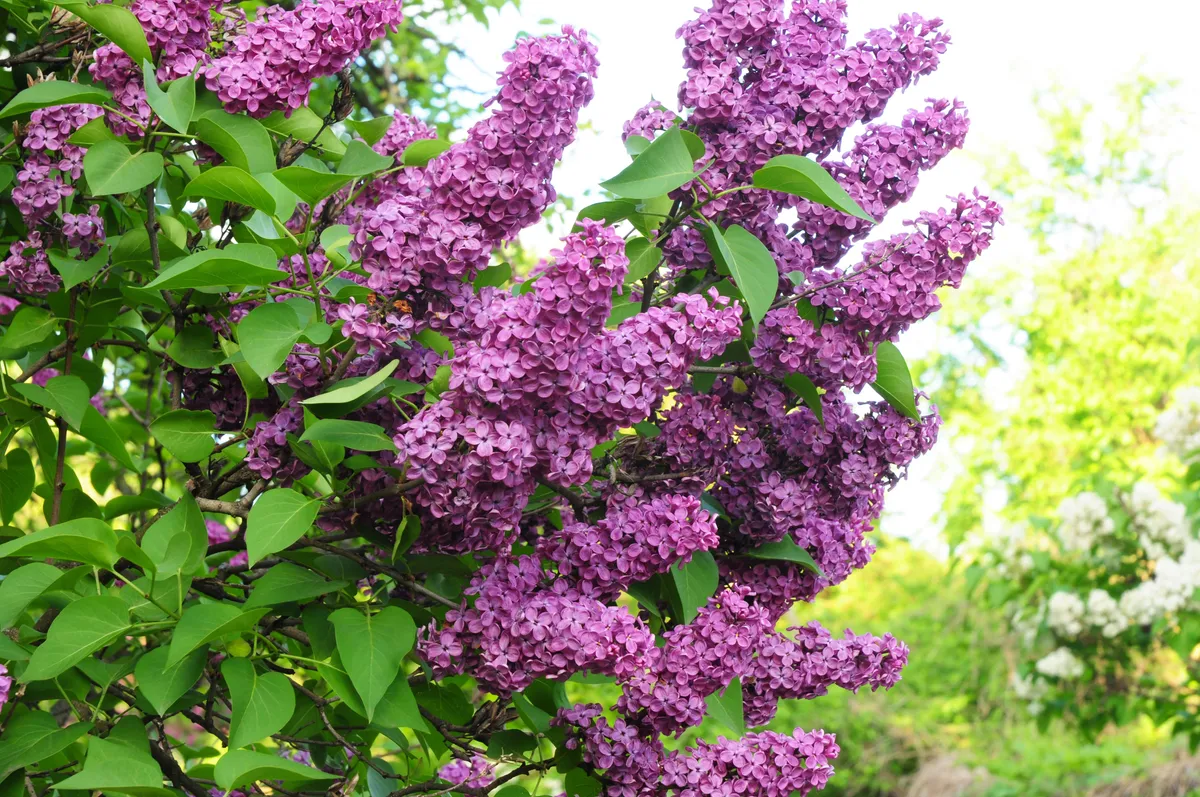
Lilacs are shrubs or small trees that have intensely fragrant, cone-shaped clusters of flowers - mostly in pale mauve, but also other shades, including dark magenta and white. Recent breeding has made these traditional shrubs appealing to modern gardeners: Syringa meyeri ‘Palibin’ and ‘Red Pixie’ are perfect for small gardens, while The Bloomerang Series, which includes 'Pink Perfume' and 'Dark Purple', repeat flower. They do well on neutral or alkaline soil.
Flowers: April/May
Evergreen/deciduous:
deciduous
Height x spread:
from 1m x 1m, depending on variety
Best for: scent, wildlife, alkaline soil
Scent? Yes
Best summer flowering shrubs
Weigela
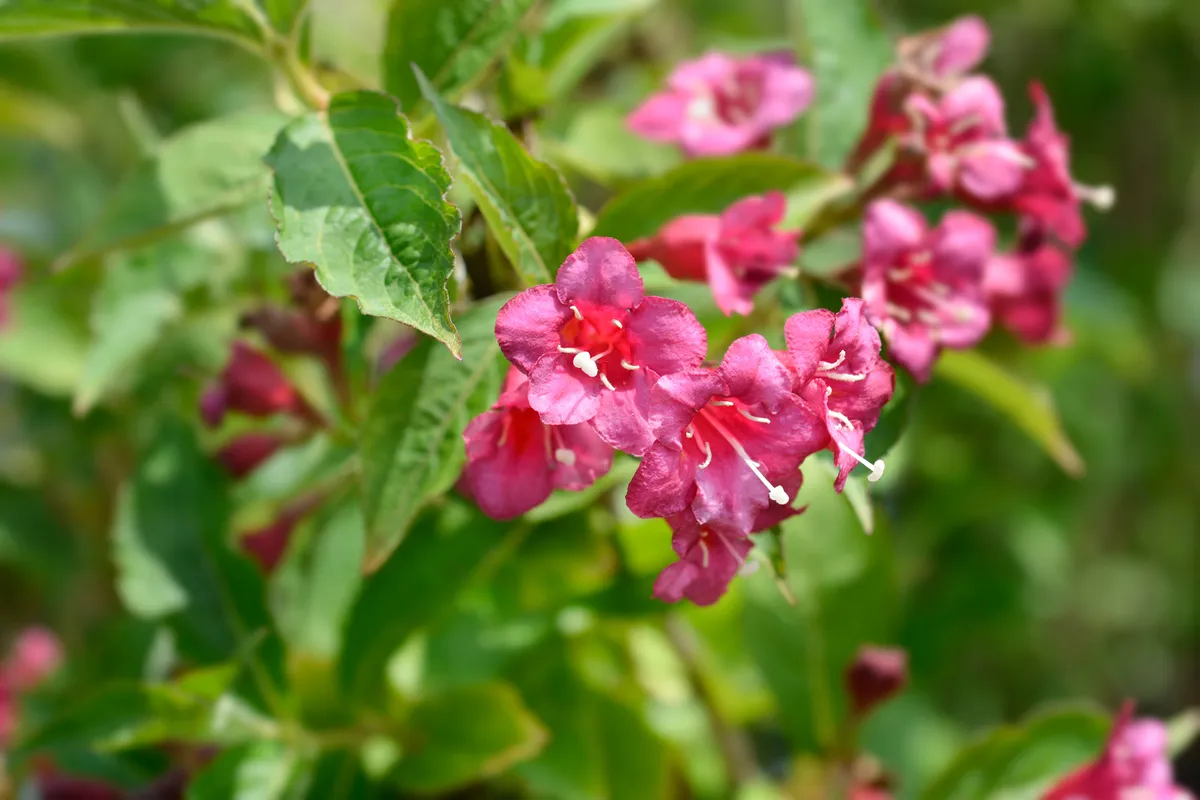
Weigelas are low-maintenance shrubs with funnel-shaped flowers in deep red, pink, white or yellow that are enjoyed by pollinators. Most bloom in midsummer, but newer cultivars such as Weigela 'Picobella Rosa' go through to early autumn. Some also have foliage in shades of bronze, purple, yellow or variegated. Weigelas look good towards the back of a mixed border. Grow in sun or partial shade.
Flowers: May/June
Evergreen/deciduous:
deciduous
Height x spread:
from around 1m x 1m
Best for: wildlife, back of a border
Scent? No
Mexican orange blossom (Choisya)
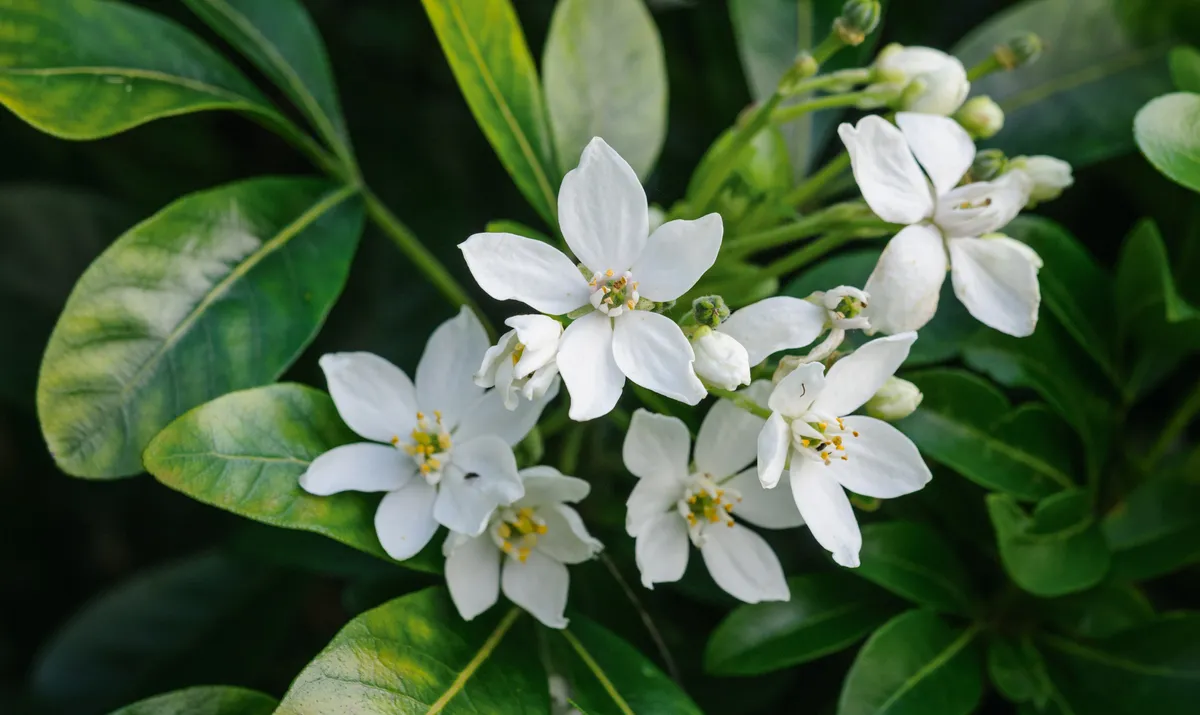
Choisya have glossy aromatic foliage and scented white flowers in late spring and early summer. They are easy to grow and compact, so excellent for small gardens. Choisya x dewitteana ‘Aztec Pearl’ sometimes repeat flowers in August or September. Choisya x dewitteana Apple Blossom is a compact new cultivar with pale pink and white flowers and also repeat flowers.
Flowers: May /June
Evergreen/deciduous:
evergreen
Height x spread:
from 1m x 1m
Best for: small gardens, scented flowers
Scent? Yes
Mock orange (Philadelphus)
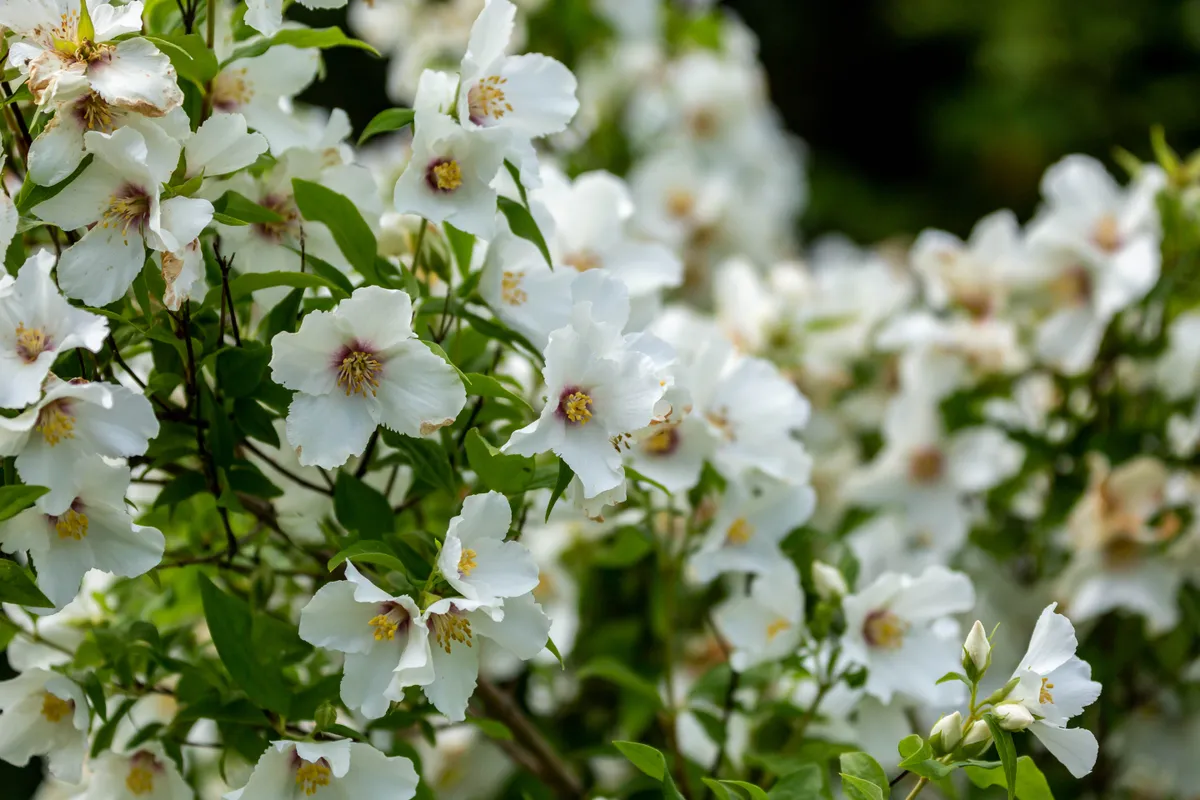
Philadelphus produces an abundance of snowy-white blooms in late spring and summer, which have a strong intoxicating fragrance, almost identical to that of orange blossom. The fragrance is especially strong early in the morning and in the evening. It is very easy to grow and care for. ‘Manteau d’Hermine’ is a compact variety, suitable for small gardens. The single-flowered varieties are loved by bees. Grow in full sun, in moist, well-drained soil.
Flowers: May/June
Evergreen/deciduous:
deciduous
Height x spread:
1.5m x 1.5m
Best for: intoxicating scent, elegant look
Scent? Yes
Elderflower (Sambucus)

Elder is a hedgerow plant but there are garden varieties available too, with attractive foliage and white or pink flowers in early summer. These are pleasantly scented and can be used to make elderflower cordial. Sambucus nigra f. porphyrophylla 'Eva' (syn. 'Black Lace') has attractive purple-black foliage and pink blooms, while Sambucus nigra f. porphyrophylla 'Gerda' (syn. 'Black Beauty') has reddish-black leaves and dark-pink flowers (which will turn cordial an attractive shade of pink). In autumn, black berries will form, which birds love. They are edible, but should not be eaten raw as they cause stomach upsets. They can be cooked and used to make an elderberry tincture - a powerful antiviral.
Flowers: May/June
Evergreen/deciduous:
deciduous
Height x spread:
approx 2m x 2m
Best for: wildlife, edible flowers and berries (after cooking)
Scent? Yes
Flowering dogwood (Cornus kousa)

There are few more breathtaking sights than a flowering dogwood in full bloom. These beautiful large shrubs or small trees have eye-catching white or pink flowers that are actually modified leaves, called bracts. Flowering dogwoods prefer neutral to acid, reasonably moist, but well-drained fertile soil, with plenty of organic matter. Many, such as Cornus 'Porlock' and Cornus florida 'Cherokee Chief', make splendid flowering trees for small gardens. Cornus are at their best with light shade. Read our guide to the best flowering dogwoods.
Flowers: June
Evergreen/deciduous:
deciduous
Height x spread:
around 3m x 5m but each varies
Best for: stunning display
Scent? No
Hebe
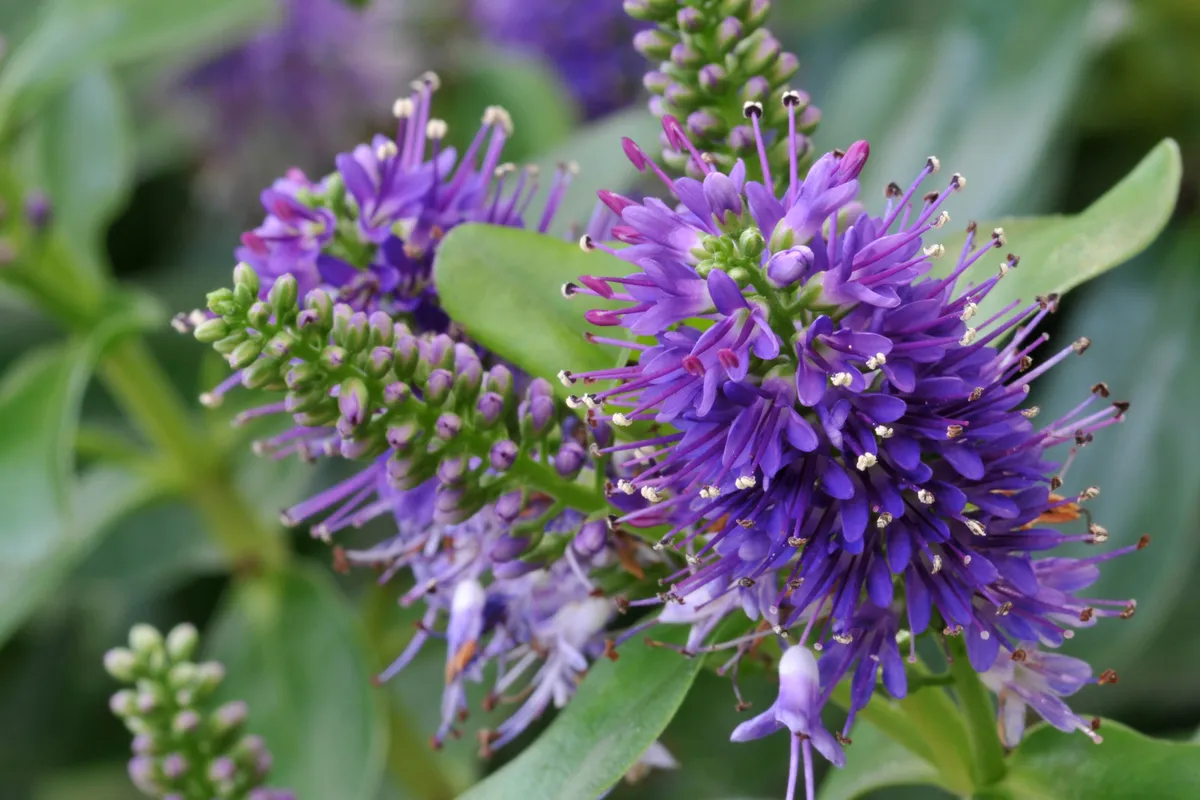
Most hebes have mounded, evergreen grey-green foliage and bottlebrush-like flowers in shades of purple, blue, pink, red or white, over a long period. Plant in a sunny spot; they do best in poor, well drained soil. Deadhead regularly for the most blooms. Hebes make ground cover, informal low hedges and interesting, evergreen interest in the front or middle of a border. Read our expert guide to growing hebes.
Flowers: June/July/August/September
Evergreen/deciduous:
evergreen
Height x spread:
40cm to 1.5m
Best for: long flowering; evergreen interest
Scent? No
Butterfly bush (Buddleia)
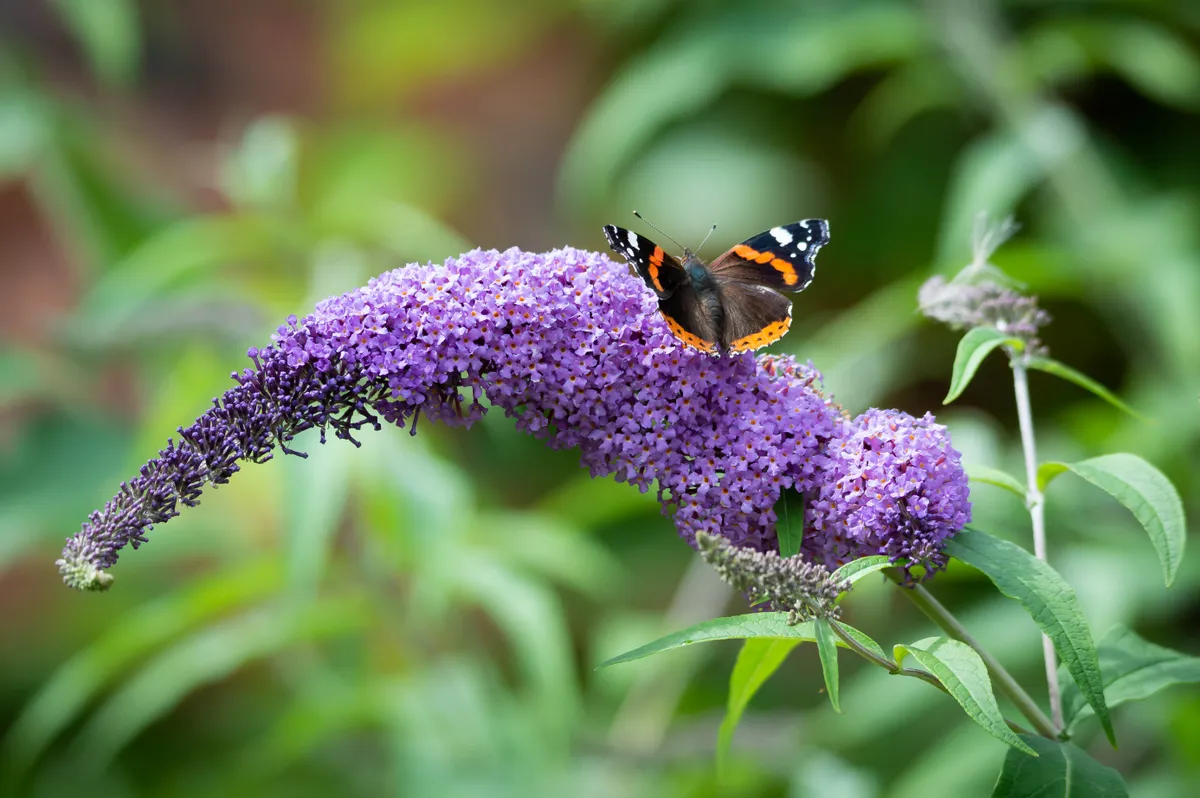
Buddleia or Buddleja are deciduous shrubs known for their cones of fragrant flowers, beloved by pollinators, including butterflies - their common name is the butterfly bush. They are typically purple but also magenta, white, mauve and even yellow. Some types grow very large and need regular pruning and deadheading to prevent spread, but recent breeding has produced many attractive and more compact varieties, making them ideal for smaller gardens. Buddleia davidii ‘Pink Delight’ is smaller and has honey-scented flowers. The 'Buzz' and 'Candy' series are compact, suitable for smaller gardens and pots. Cut buddleias back hard in spring.
Flowers: July/August/September
Evergreen/deciduous:
decidous
Height x spread:
from 80cm to 5m, depending on variety
Best for: pollinators, long flowering time
Scent? Yes
Smoke bush (Cotinus)

Cotinus are large shrubs with green, purple or gold leaves and hazy tufts of fluffy flowers in summer; many have excellent autumn foliage colour too. The common name of smoke bush or smoke tree is inspired by the flowers, which form a smoky haze around the plant. Cotinus ‘Grace’ is a popular variety that also has excellent foliage colour in autumn.
Flowers: June/July/August
Evergreen/deciduous:
deciduous
Height x spread:
approx 3m x 3m, but sizes vary
Best for: flowers and autumn colour
Scent? No
Read our guide to growing cotinus.
Hydrangea
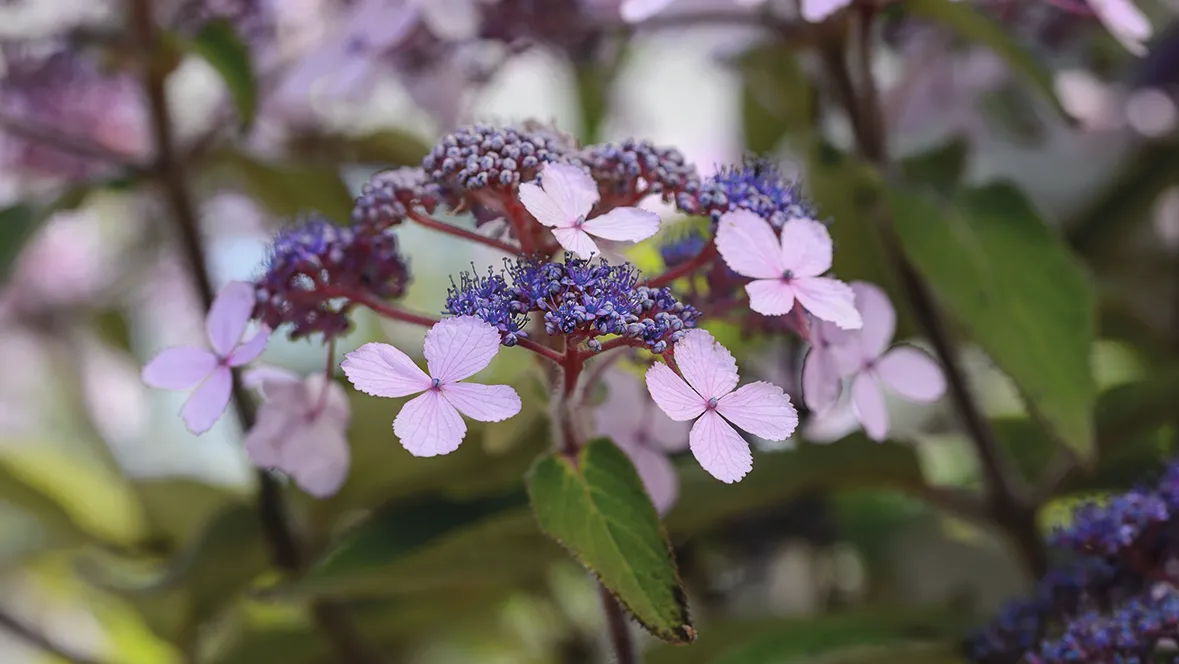
There are many different types of hydrangeas, from lacecaps that have flat flowerheads with larger petals on the outside, to mopheads that have big round blooms and the more modern Hydrangea paniculata varieties that have cone-shaped blooms and are incredibly long flowering. They come in an array of colours from white and pink, to deep blue when grown in acid soil. Hydrangea arborescens ‘Annabelle’ and Hydrangea paniculata 'Limelight' are a favourite with garden designers. Oakleaf hydrangeas (Hydrangea quercifolia) have good autumn foliage colour, too. Hydrangea anomala subsp. petiolaris is a climbing variety. Grow hydrangeas in sun or light shade, in moist soil.
Flowers: July/August/September
Evergreen/deciduous:
deciduous
Height x spread:
from 1m x 1m
Best for: long flowering season
Scent? No
Fuchsia

Hardy fuchsias have dainty, often two-tone flowers that look like ballerinas in tutus, in shades of white, red, pink and purple. They can be incredibly long flowering. Popular cultivars include ‘Lady Boothby’ and ‘Mrs Popple’. Fuchsia magellanica var. molinae makes a good informal flowering hedge.
Flowers: June/July/August/September/October
Evergreen/deciduous:
mostly deciduous
Height x spread:
sizes vary
Best for: incredibly long flowering time
Scent? No
Read about the best fuchsias for your garden.
Bluebeard (Caryopteris)

Caryopteris are compact shrubs that bear scented blue flowers, shown off by their green-grey foliage, from late summer and into autumn. They are adored by bees and butterflies and are drought tolerant plants – grow them in a warm, sunny spot. Go for ‘Heavenly Blue’ or ‘Kew Blue’, or a cultivars with white or pink flowers such as 'Pink Perfection'. They combine well with ornamental grasses, asters and other late flowering perennials.
Flowers: August/September
Evergreen/deciduous:
deciduous
Height x spread:
from 1m x 1m
Best for: combining with late summer perennials; bees and butterflies
Scent? Yes
Best flowering shrubs for autumn
Many flowering shrubs straddle summer and autumn – see our Summer selection, above.
Abelia
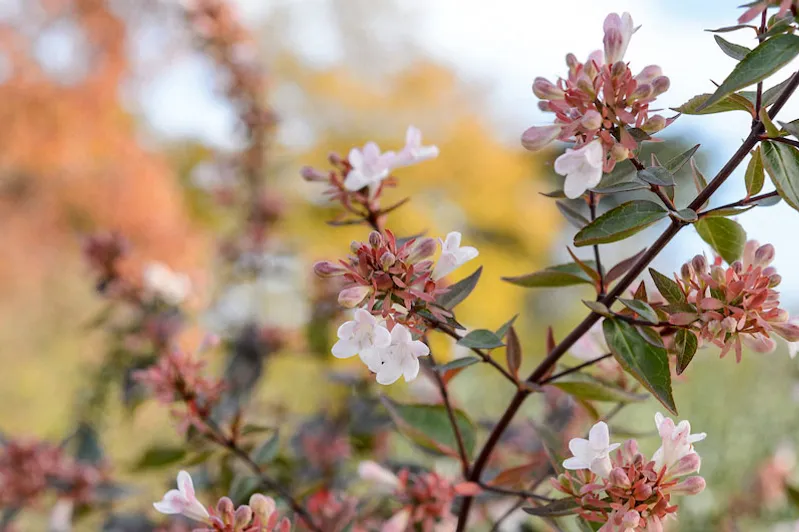
Many summer-flowering shrubs straddle summer and autumn, and abelias are no exception. They have an incredibly long flowering time, often beginning as early as June and continuing until October or November. They produce masses of small, white/pink trumpet-like flowers that are scented and a magnet for bees. They are slightly tender, so best grown in a sheltered spot. 'Sunshine Dream' is a compact variety. Abelias are semi evergreen, retaining their leaves for much of the year, especially in sheltered gardens.
Flowers: July/August/September/October
Evergreen/deciduous:
deciduous
Height x spread:
from 1m x 1m
Best for: combining with late summer perennials; bees and butterflies
Scent? Yes
Plumbago (Ceratostigma willmottianum)

This unusual, compact shrub has bright cobalt-blue flowers (loved by bees) from August to October, complemented by reddish autumn leaves as the season progresses. Grow in a sheltered, sunny spot. It combines well with ornamental grasses, asters and other late flowering perennials.
Flowers: August/September/October
Evergreen/deciduous:
deciduous
Height x spread:
1m x 1m
Best for: combining with late summer perennials; bees
Scent? No
Camellia sasanqua

Most camellias flower in late winter and early spring, but Camellia sasanqua types flower in late autumn and early winter, when not much else is in flower. They have evergreen leaves and beautiful, scented flowers in a range of colours, including white and red. Unlike spring-flowering camellias, they do well in a sunny spot. They can also be grown as an informal and unusual hedge. Compact cultivars grow well in containers.
Flowers: October/November/December
Evergreen/deciduous:
evergreen
Height x spread:
3m x 3m
Best for: autumn flowers
Scent? Yes
Spindle (Euonymus europaeus)

The ‘flowers’ of these bushy shrubs are actually brightly coloured, winged fruits that smother the plant in autumn (spindles actually produce insignificant flowers in late spring or early summer). These fruits split to reveal seeds in contrasting colours – usually pink casings with metallic-blue or orange seeds. This coupled with stunning autumn foliage makes the plant an arresting sight. Euonymus europaeus ‘Red Cascade’ is one of the best cultivars. Euonymus are tough plants that are happy in most soils and conditions.
Flowers: Fruits from September/October/November/December
Evergreen/deciduous:
deciduous
Height x spread:
1.5 to 4m x 1.5m to 4m.
Best for: autumn fruits and stunning autumn foliage
Scent? No
Read our expert guide to growing euonymus.
Best flowering shrubs for winter
Viburnum
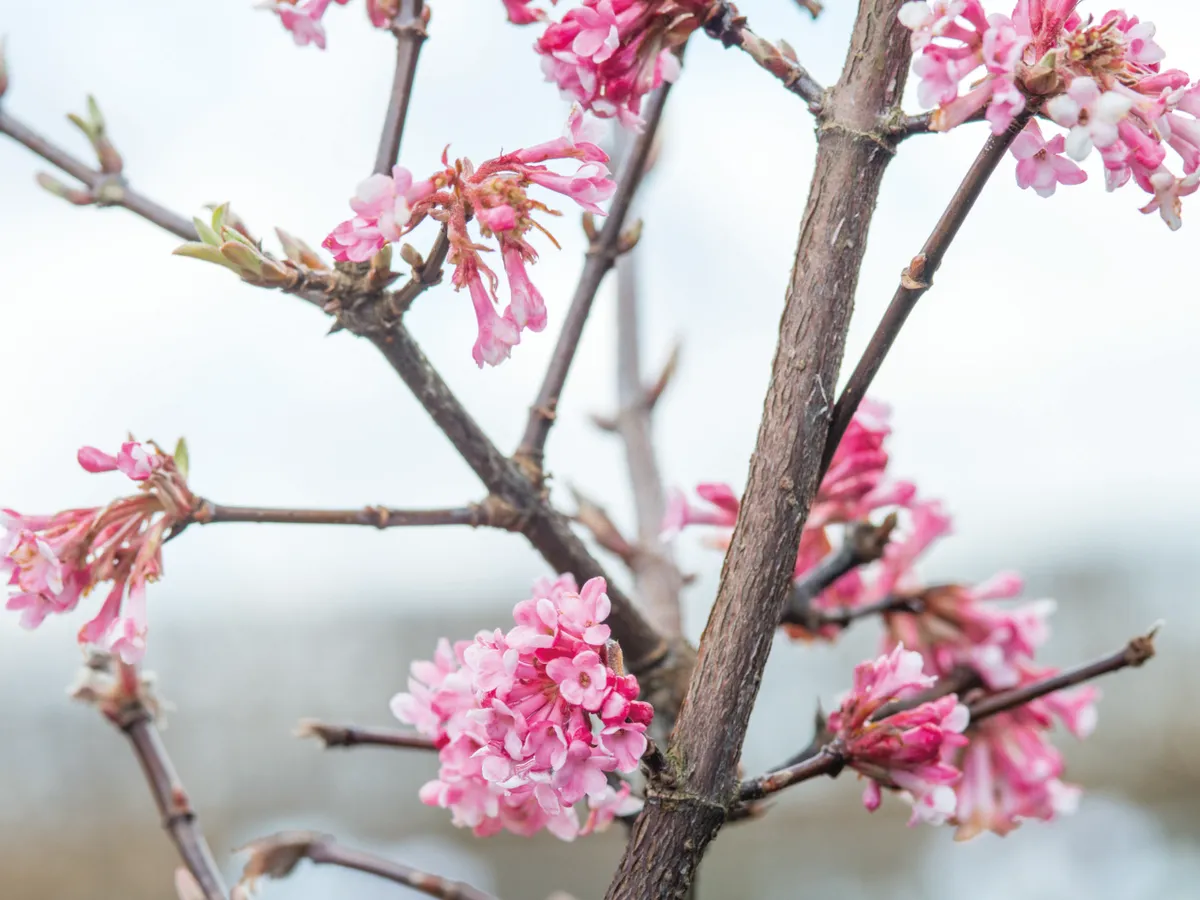
Depending on the variety, the white or pink flowers of viburnums appear from autumn to late spring. They are often stongly scented. Viburnums are easygoing, low maintenance shrubs that grow well in sun or partial shade. There are many viburnums to choose from: Viburnum tinus 'Eve Price' is a popular evergreen variety with flowers from December to April; Viburnum x bodnantense 'Dawn' has globe-shaped clusters of scented flowers from November to March.
Flowers: autumn to spring, depending on variety
Evergreen/deciduous:
evergreen or deciduous, depending on variety
Height x spread:
Best for: scented flowers, winter interest
Scent? Often scented
Witch hazel (Hamamelis)

Hamamelis, or witch hazel, bear spidery, citrus-scented flowers in shades of yellow, orange or red along their bare branches in winter. Many cultivars also have good autumn foliage colour too. Good choices include Hamamelis x intermedia ‘Pallida’, with yellow flowers and ‘Jelena’, with orange blooms. Grow in a sunny spot.
Flowers: December/January/February
Evergreen/deciduous:
deciduous
Height x spread:
approx 3m x 3m
Best for: scent, unusual blooms
Scent? Yes
Read our expert guide to growing Hamamelis.
Daphne

These evergreen shrubs bear star-shaped, scented flowers in winter and as they are compact, are ideal for smaller gardens. They are woodland plants, so grow them in dappled shade; if you can, plant them somewhere close to the house, where their scent can be appreciated, even if you don't venture far into the garden on a cold day. Daphnes can take a while to establish.
Flowers: January/February/March
Evergreen/deciduous:
evergreen
Height x spread:
1.5m x 1.5m
Best for: evergreen interest, scent
Scent? Yes
Read our expert guide to growing daphnes.
Mahonia
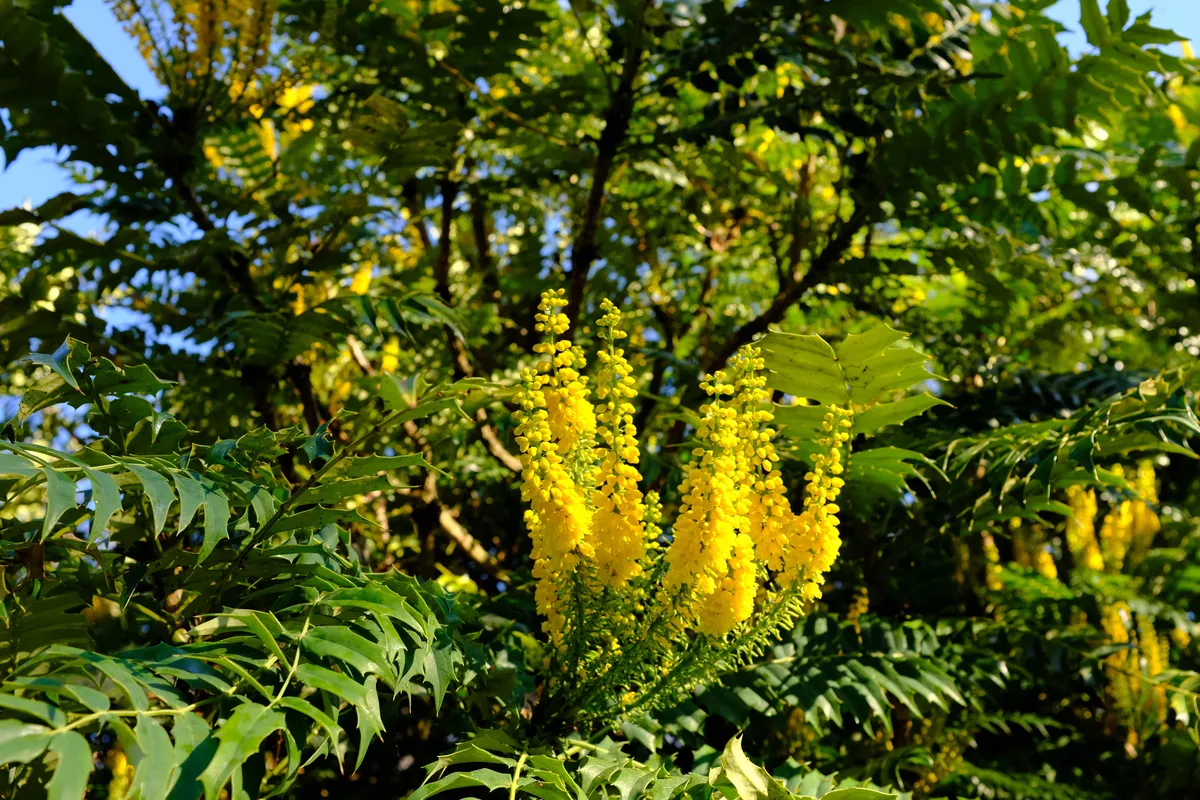
The scented, cheery yellow flowers of mahonia appear in late autumn, winter and spring and are a valuable food source for early bees and pollinators. Most have evergreen holly-like leaves and dark purple berries; Mahonia 'Soft Caress' is a new cultivar that has thinner, feathery leaves and honey-scented blooms.
Flowers: November/December/January/February/March
Evergreen/deciduous:
evergreen
Height x spread:
3m x 3m
Best for: long-lasting flowers, scent, pollinators
Scent? Yes
